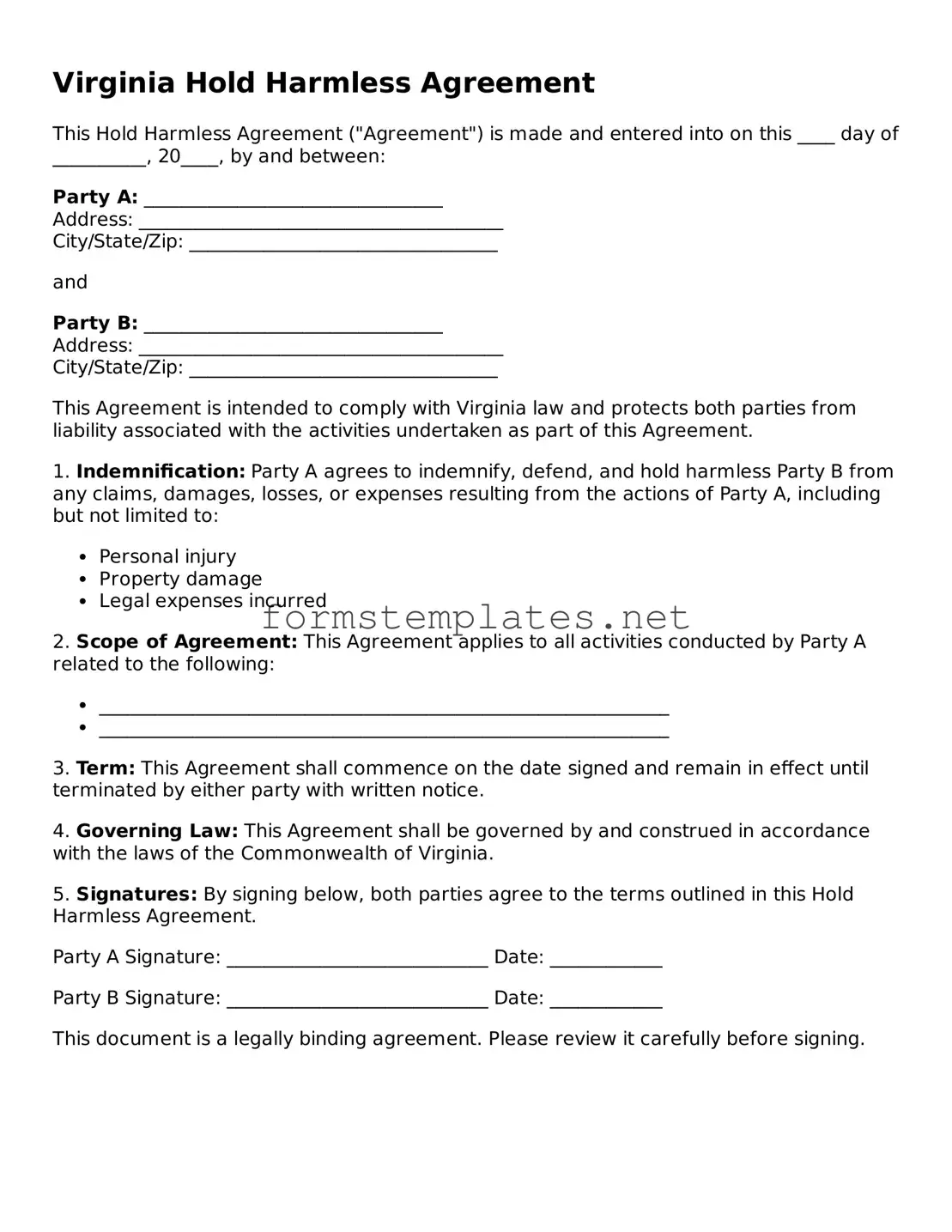Virginia Hold Harmless Agreement
This Hold Harmless Agreement ("Agreement") is made and entered into on this ____ day of __________, 20____, by and between:
Party A: ________________________________
Address: _______________________________________
City/State/Zip: _________________________________
and
Party B: ________________________________
Address: _______________________________________
City/State/Zip: _________________________________
This Agreement is intended to comply with Virginia law and protects both parties from liability associated with the activities undertaken as part of this Agreement.
1. Indemnification: Party A agrees to indemnify, defend, and hold harmless Party B from any claims, damages, losses, or expenses resulting from the actions of Party A, including but not limited to:
- Personal injury
- Property damage
- Legal expenses incurred
2. Scope of Agreement: This Agreement applies to all activities conducted by Party A related to the following:
- _____________________________________________________________
- _____________________________________________________________
3. Term: This Agreement shall commence on the date signed and remain in effect until terminated by either party with written notice.
4. Governing Law: This Agreement shall be governed by and construed in accordance with the laws of the Commonwealth of Virginia.
5. Signatures: By signing below, both parties agree to the terms outlined in this Hold Harmless Agreement.
Party A Signature: ____________________________ Date: ____________
Party B Signature: ____________________________ Date: ____________
This document is a legally binding agreement. Please review it carefully before signing.
